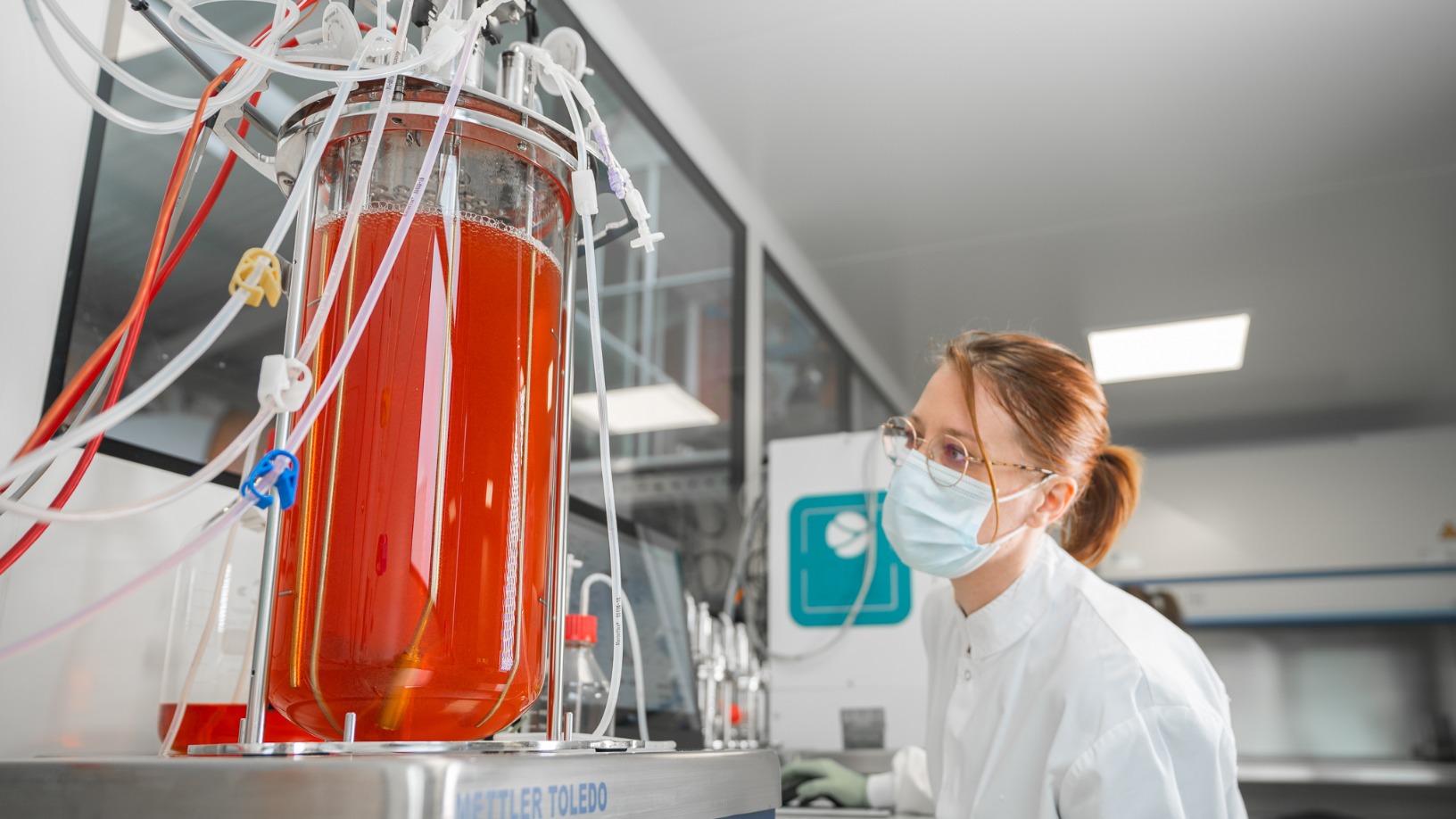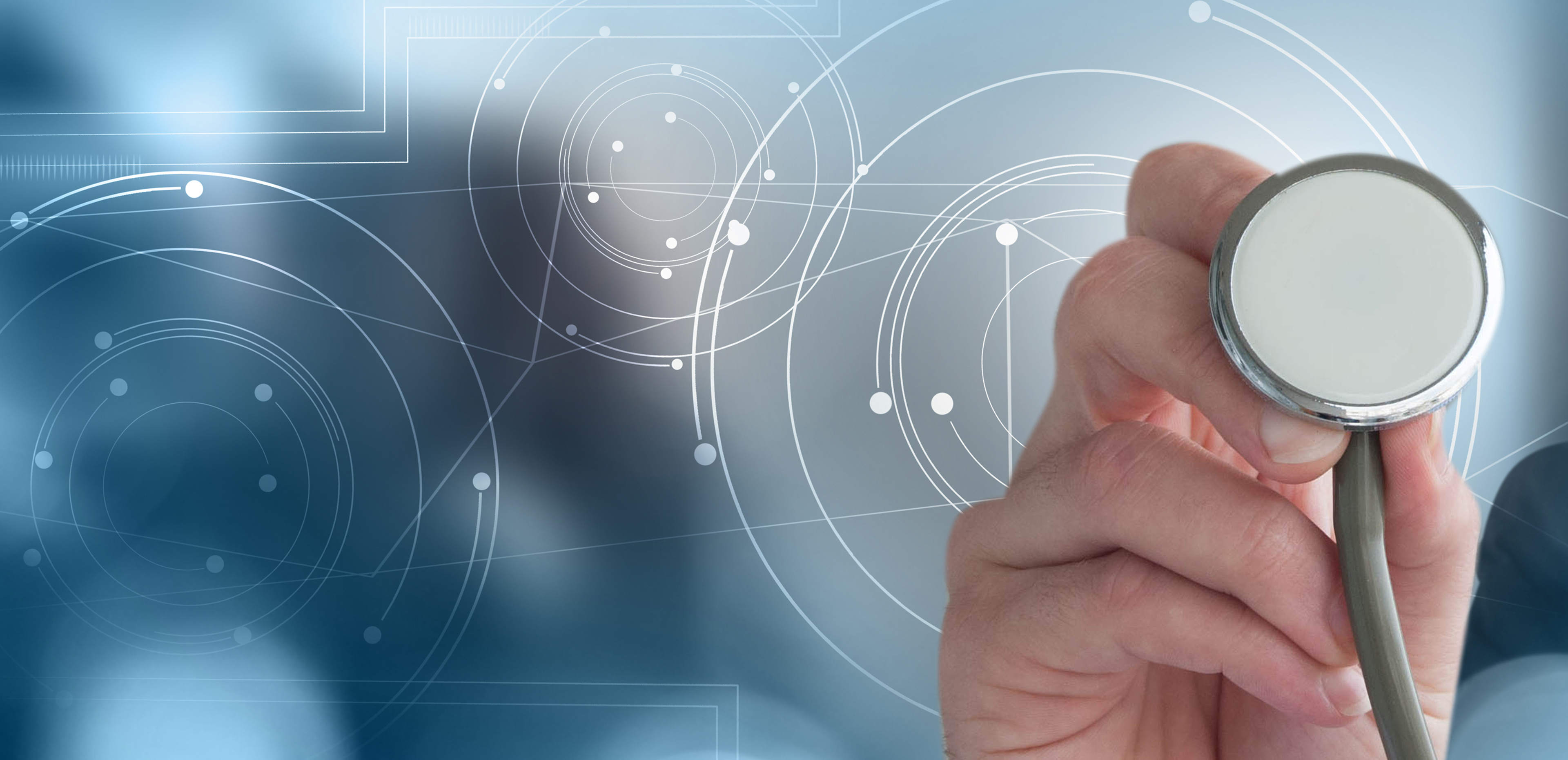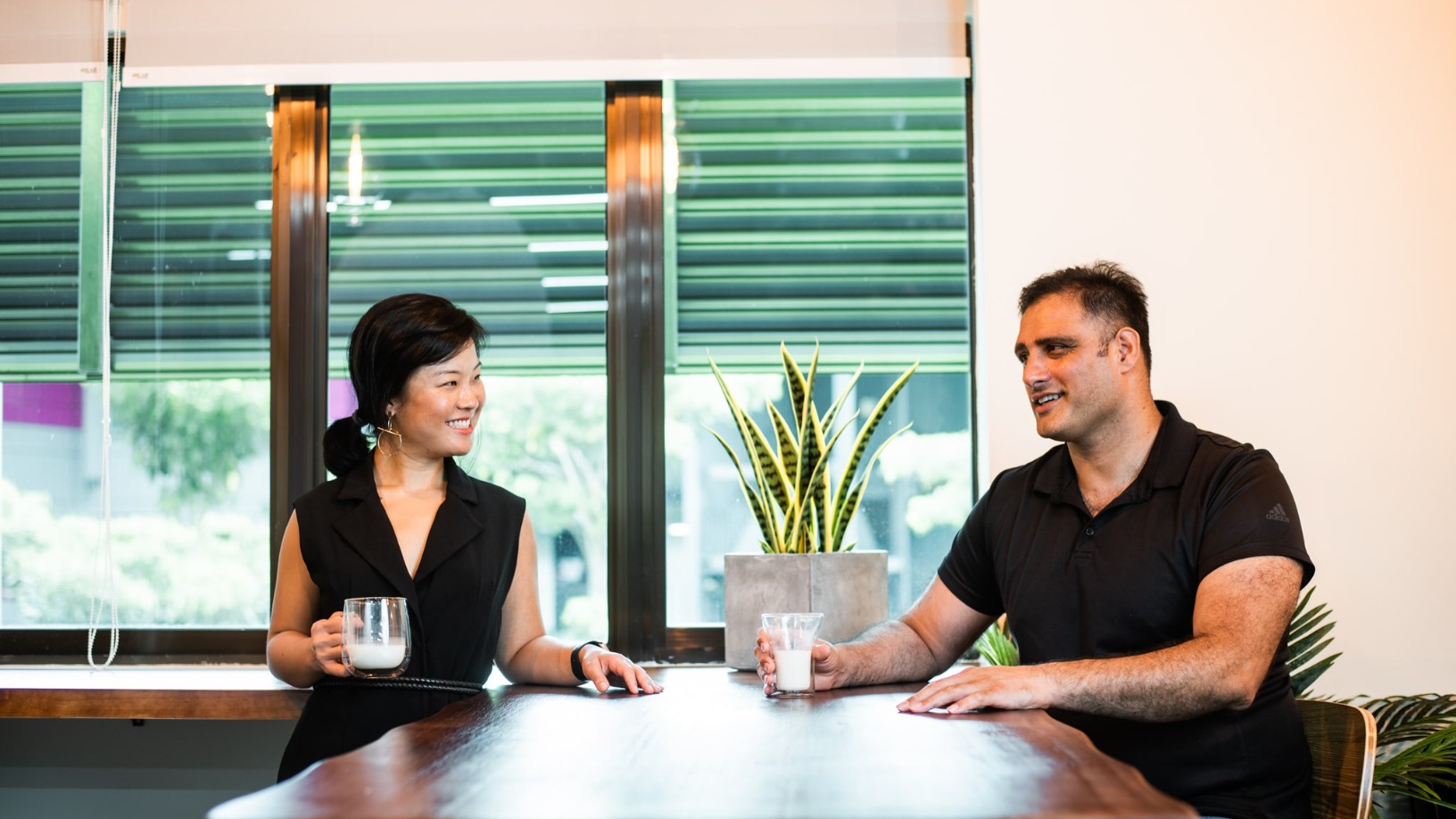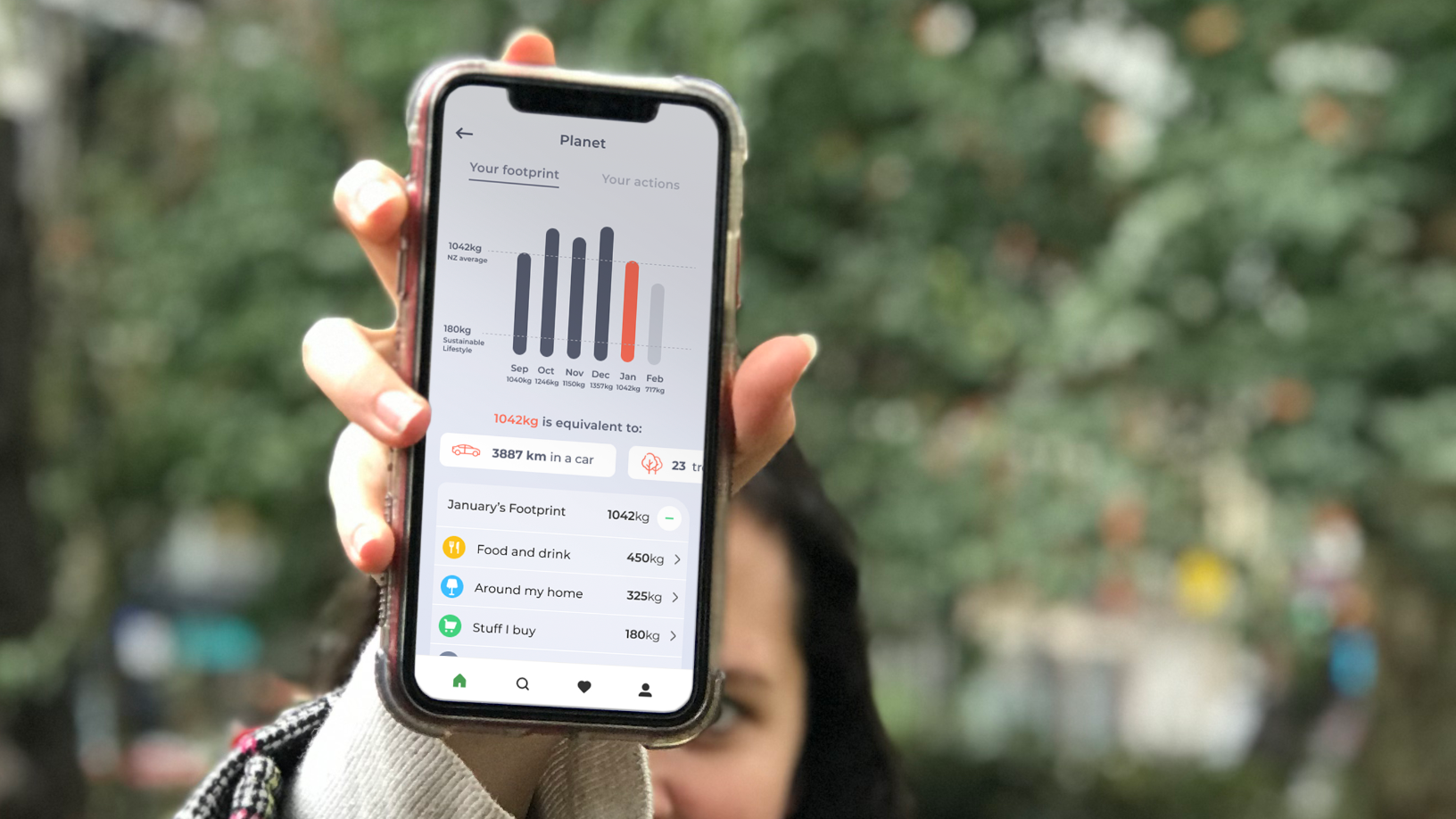Pluripotent stem cells are master cells that can be used to make different types of cells for various purposes. They can also self-renew and potentially produce any cell or tissue that the body needs to repair itself. In the past, human induced pluripotent stem cell (hiPSC) cultivation took place in the 2D environment of a petri dish, a laborious process that produces poor quality cells in limited quantities – a major barrier to the widespread development of stem cell therapies.
French biotech startup TreeFrog Therapeutics has developed a game-changing biocapsule solution to cultivate pluripotent stem cells in a 3D environment that mimics how stem cells grow in the human body. The proprietary technology, dubbed C-Stem, can be scaled to mass-produce high-quality cells to deliver safe, efficient and affordable stem cell therapies to millions of patients.
TreeFrog’s biocapsule solution uses a microfluidic device to mass-produce cells encapsulated in an alginate membrane strong enough to protect the cells. The membrane is also sufficiently porous to allow nutrients to enter the capsules to grow the cells. The cultivated cells are easily harvested by dissolving the capsule membrane.
“Stem cells spontaneously self-organize in the capsule and replicate 3D structures that are found in vivo at early stages of development,” TreeFrog CEO and co-founder Kevin Alessandri told CompassList in a recent interview. “All we do at TreeFrog is design biomimetic environments for the cells and let them do their job. And they do great,” added Alessandri, who is also TreeFrog’s CTO.
The C-Stem microfluidic device can produce 5,000 cells per second. Together with a bioreactor, C-Stem can be used to produce billions of high-quality, stable stem cells. The cell therapy for Parkinson’s disease would require less than 400,000 cells per patient, while liver disease treatment requires around 4bn, he added.
Staying ahead of the game
The rapid scale at which new cells can be cultivated using C-Stem will enable TreeFrog to launch a commercial product quickly and cheaply. Research data presented in May at the 24th Annual Meeting of the American Society of Gene & Cell Therapy revealed that the C-Stem technology outperformed both 2D and aggregate cell culture in a bioreactor in terms of cell amplification. For example, C-Stem can be used in a single 10-liter bioreactor to produce enough stem cells to create 10,000 doses for Parkinson’s disease in just one week.
“In cell therapy, once you have put out your clinical trial, you have to be able to take the next steps [to commercialize the treatment and make it available to patients], and very few companies will be able to do that. The best initiatives may be able to provide treatments for about 1,000 patients a year. After the tens of millions invested in the field and all the effort, it’s not worth it […] so, we have to find a better way, we have to be able to move faster than that," Alessandri said.
“One of the leaders in the industry estimated that we are five years ahead of everybody else in the field; this way of engineering capsules as a vessel, which is independent of the cell development process, we are the only ones who are doing that.”
Founded in 2018, TreeFrog has already raised €15m, including €7.1m in a Series A round in 2019. Early-stage funding included €2.5m from the European Commission Horizon 2020 program, €1m from the French government, and grants and investments from regional authorities and private investors.
TreeFrog is currently raising €50m through a Series B round, expected to close before the summer. The fresh funding will enable the biotech to establish a US company in Boston and expand into Japan, where the team already has close ties with scientists working in the same field.
Growing cells in capsules
The idea for TreeFrog was spawned in 2014 in the atomic shelter of Geneva University when physicist Alessandri met co-founder Maxime Feyeux who later became the startup’s president and CSO. A biologist, Feyeux had spent years studying the neural progenies – the ability of cells to divide and differentiate – of embryonic stem cells and induced pluripotent stem cells (iPSC).
All we do at TreeFrog is design biomimetic environments for the cells and let them do their job
Earlier in 2012, Japanese Professor Shinya Yamanaka was awarded the Nobel Prize for his discovery that mature cells could be reprogrammed to become pluripotent, with similar “master cell” capabilities of pluripotent stem cells. However, Feyeux realized that the quality and stability of iPSC would be a major issue for the development of workable stem cell therapies and decided to focus his research on finding a way to cultivate and differentiate cells in a manner that resembled the natural processes in the human body.
Meanwhile, Alessandri, who has master’s degrees in genetics and neurobiology, had been researching the conditions needed by cells to form complex layers of tissues. Alessandri’s research team developed a cell encapsulation system that created an optimal environment for cell cultivation. The only thing missing was an application for the new capsule technology.
“When I met Max, it was almost like a Eureka moment; finally, someone I can talk with,” Alessandri recalled. “It was a very human interaction because the fact is that the two fields of biology and physics are very far apart, so it’s very complex to work together.”
The co-founders quickly proved that the cell encapsulation system could increase the stability and quality of cultivated stem cells and began to work on ways to scale up cell production. TreeFrog was founded in Bordeaux, Nouvelle-Aquitaine, a southwestern region of France renowned for supporting industrial startups and deep tech.
Today, TreeFrog has 40 staff, eight patent families and four advanced cell therapies. Research partners in France include Imagine Institute in Paris and Bordeaux Neurocampus. Overseas partners comprise the Japanese Foundation for Biomedical Research and Innovation in Kobe, Dana Farber Cancer Institute and the Harvard Stem Cell Institute in Boston, in the US.
First medical protocol
TreeFrog's business model is based on the company developing and commercializing viable medical protocols internally, and also in partnership with pharmaceuticals. The company has already signed contracts with the French Blood Agency and two pharmaceutical companies. Its innovation pipeline includes research on specific medical applications, such as post-myocardial infarction, bone marrow transplant, acute liver failure and Type 1 diabetes.
The biotech’s first medical protocol, which is being developed, is based on Feyeux’s previous extensive research on Parkinson’s disease. Clinical trials are expected to begin in 2024. Unlike other protocols, which focus on transplanting progenitors, C-Stem will use hiPSC to grow the mature microtissues required for patient transplants.
The hiPSC cultures can be derived from human cells like skin or blood cells which are then re-engineered into a pluripotent state, similar to those found in an embryo. Unlike progenitor cells, which can only be transformed into specific types of cells, hiPSC can be used for the unlimited development of different types of cells for therapeutic purposes. Pre-clinical trials have shown that the hiPSC-cultivated mature microtissues can speed up patient recovery with added safety and efficacy benefits.
“While progenitors are grafted and left to mature in the brain of the host, our neuron microtissues can be fully characterized before the transplant to make sure that we replace the exact type and number of cells needed by the patient. It means that we have much better control over the product, the dose and long-term safety," Alessandri said.










